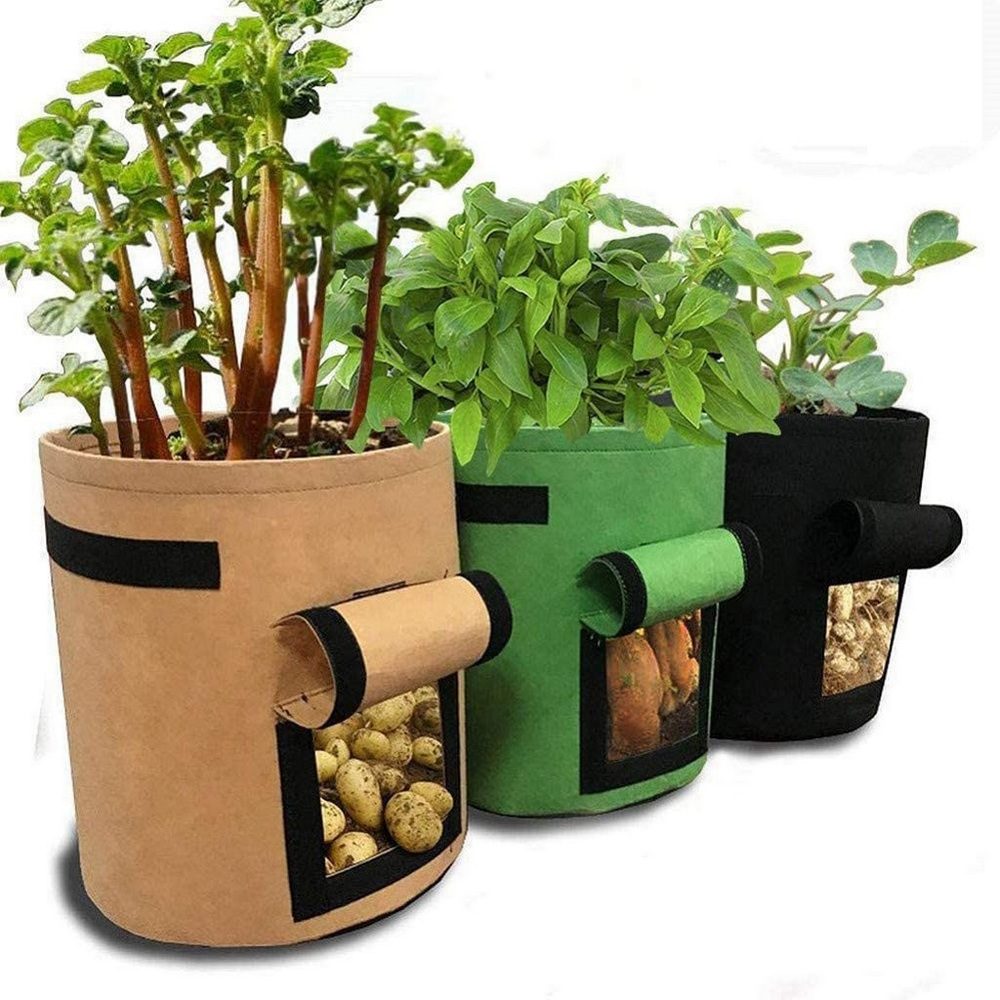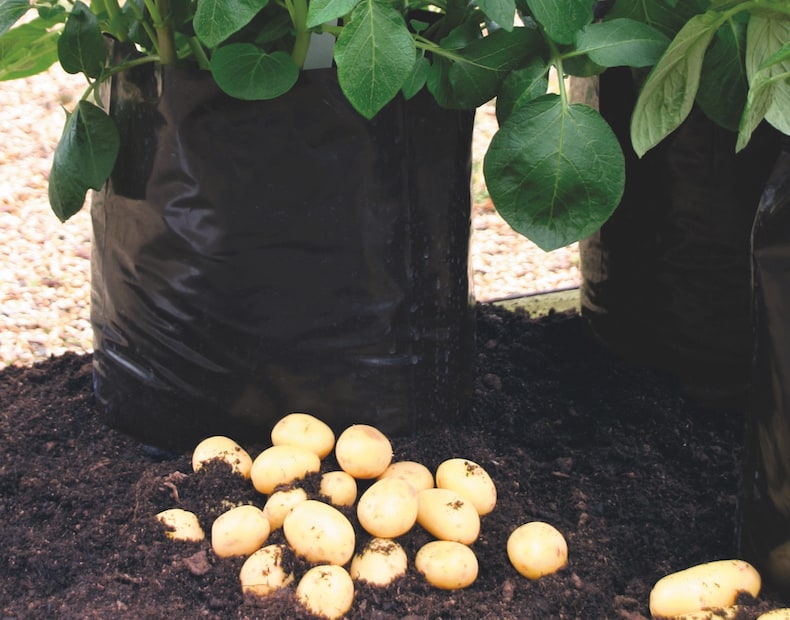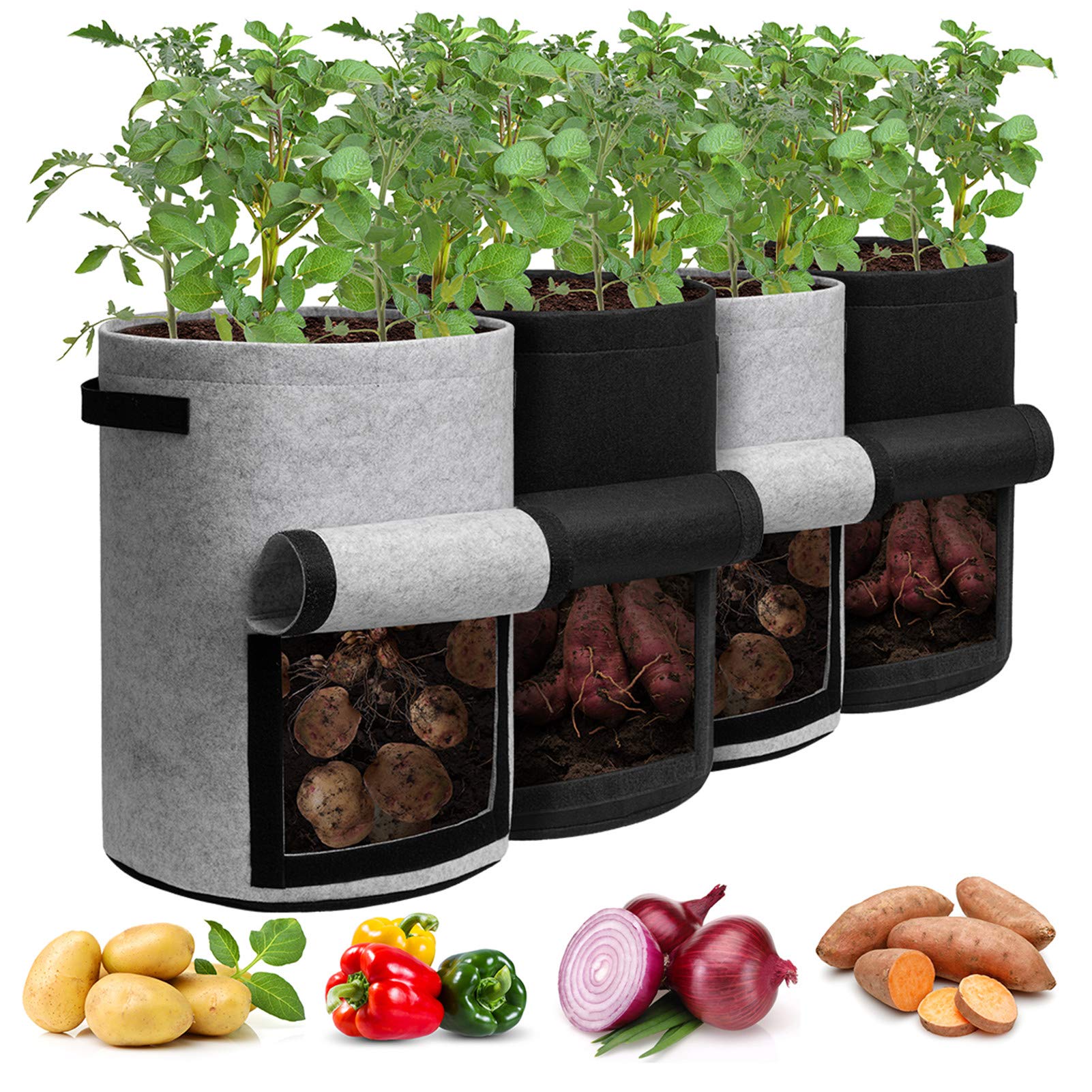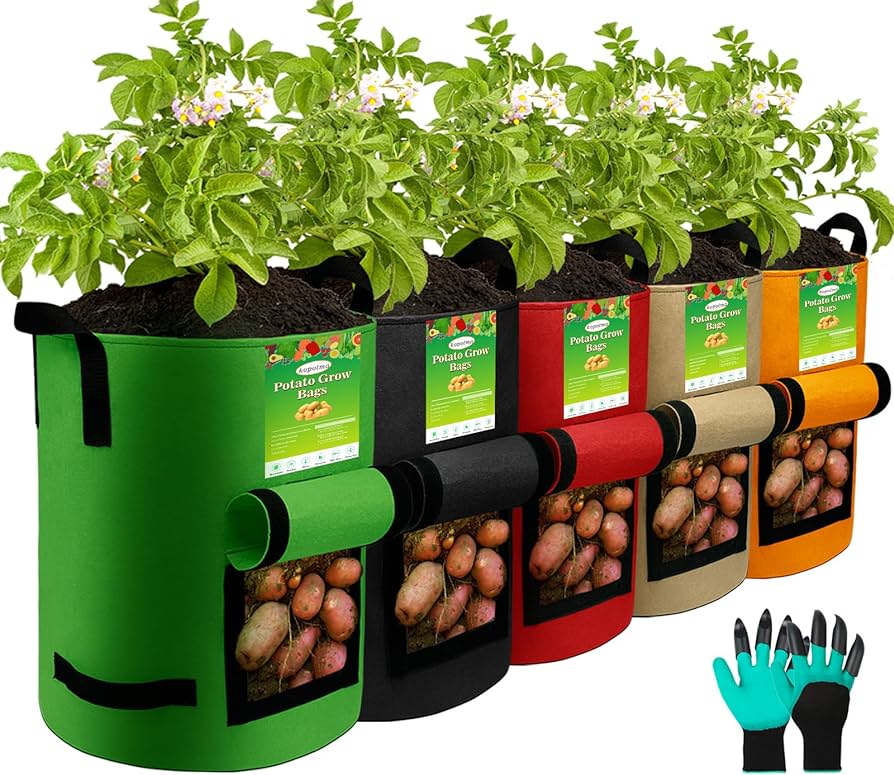I. Introduction
A. Importance of Urban and Limited Space Gardening
In contemporary urban environments, the concept of gardening has transcended traditional boundaries to become a crucial aspect of sustainable living. Urban and limited space gardening offers an opportunity for individuals to reconnect with the natural world, cultivate their food, and embellish their living spaces with greenery. By integrating gardening practices into urban settings, individuals can create self-sustaining environments, reduce their ecological footprint, and gain access to healthy, organic produce without relying solely on commercial offerings. Furthermore, urban gardening fosters community engagement, as individuals often come together to share knowledge, experiences, and the bounties of their harvests.
B. Benefits of Potato Cultivation in Grow Bags for Urban Settings
Potato cultivation in urban settings can be challenging due to the limited availability of space and the need for specialized gardening solutions. Grow bags provide a versatile and innovative approach to address these challenges. They allow urban and limited space dwellers to cultivate potatoes in constrained environments, such as balconies, small patios, and terraces, where traditional gardening may not be feasible. Growing potatoes in grow bags enables individuals to optimize their available space, enhancing their self-sufficiency by producing organic, homegrown potatoes in an efficient and convenient manner. This approach to potato cultivation not only supports urban gardening initiatives but also promotes a more sustainable and eco-friendly lifestyle.
II. Selecting Suitable Potato Varieties and Grow Bags
A. Identifying Ideal Potato Varieties for Grow Bag Cultivation
When choosing potato varieties for grow bag cultivation, it’s important to select those suited to confined spaces. Compact or dwarf varieties are ideal, as they can thrive and yield a bountiful harvest in the constrained environment of a grow bag.
B. Considerations for Choosing Grow Bags for Potato Cultivation
Different types of grow bags are available, including fabric, plastic, and even burlap. Each type has its unique characteristics, such as breathability, durability, and water retention. The choice of grow bags should align with the specific needs of potato cultivation, considering factors such as drainage, aeration, and insulation to create an optimal growing environment.
III. Soil and Planting Preparation
A. Selecting Quality Soil for Grow Bag Potato Cultivation
Quality soil is critical for successful potato cultivation in grow bags. A well-draining, nutrient-rich soil mix is essential to support healthy plant growth and prevent issues such as waterlogging. A mix of peat, compost, and loamy soil is often recommended to provide the necessary balance of structure, nutrients, and aeration.
B. Techniques for Planting Potatoes in Grow Bags
Proper planting techniques are fundamental to the success of grow bag potato cultivation. Layering the soil mix and planting potatoes at the appropriate depth facilitate robust root development, leading to healthier plants and higher yields. Preparing the grow bags by filling them partially and then adding potatoes before covering them with additional soil allows for effective root expansion and tuber development.
IV. Care and Maintenance of Grow Bag Potato Plants
A. Watering and Fertilization Practices for Grow Bags
Consistent and adequate watering is crucial for grow bag potato cultivation. Proper hydration supports healthy growth and the development of tubers. Additionally, a balanced fertilization regimen, including organic or slow-release fertilizers, ensures that the plants receive essential nutrients for optimal growth and yield.
B. Disease and Pest Management in Grow Bag Cultivation
Vigilance against common potato plant diseases and pests is integral to successful potato cultivation. Regular inspection and proactive measures, such as using natural pest deterrents or disease-resistant varieties, are key components of integrated pest management to maintain plant health and productivity.
V. Maximizing Yield in Limited Space
A. Strategies for Optimizing Potato Growth in Grow Bags
To maximize yield in grow bag potato cultivation, techniques such as hilling, mulching, and regular monitoring of plant health are vital. Proper hilling encourages the development of a greater number of tubers, while mulching aids in moisture retention and temperature moderation, creating optimal growing conditions.
B. Harvesting Techniques and Storage Considerations
Harvesting potatoes from grow bags can be an exciting and rewarding experience. Proper timing and techniques, such as gently emptying the grow bags to retrieve the potatoes, help avoid damage and extend the storage life of the freshly harvested tubers. Proper curing and storage methods help preserve the quality of the potatoes for long-term use.
VI. Sustainability and Environmental Benefits
A. Sustainable Practices in Grow Bag Potato Cultivation
Grow bag potato cultivation inherently promotes sustainable practices by enabling urban and limited space gardeners to reduce their ecological footprint. The efficient use of resources in grow bag gardening, such as water and soil, aligns with sustainable gardening practices, contributing to environmental stewardship.
B. Environmental Advantages of Urban Potato Cultivation in Grow Bags
Urban potato cultivation in grow bags offers environmental benefits, including localized food production, reduced transportation-related emissions, and conservation of green spaces. By cultivating potatoes in grow bags, urban gardeners contribute to greener, more sustainable urban environments.
VII. Creative and Aesthetic Aspects of Urban Potato Cultivation
A. Enhancing Urban Spaces with Grow Bag Potato Cultivation
Beyond its practical benefits, grow bag potato cultivation brings aesthetic value to urban spaces. The lush foliage and occasional blooms of potato plants create visually pleasing greenery, adding a touch of natural beauty to urban balconies, patios, and rooftop gardens.
B. Incorporating Grow Bag Potatoes as Ornamental Elements in Urban Gardens
With their attractive flowering and foliage, grow bag potato plants can serve as decorative features in urban gardens, enriching outdoor living spaces with the vibrancy of nature. The dual functionality of grow bag potatoes as both ornamental and edible plants enhances the appeal of urban gardens.
VIII. Conclusion
A. Summary of the Benefits and Innovation in Grow Bag Potato Cultivation
The practice of cultivating potatoes in grow bags presents an innovative and efficient approach to urban and limited space gardening, offering a myriad of benefits, both practical and aesthetic. From maximizing yields in confined spaces to contributing to environmental sustainability, grow bag potato cultivation is a valuable addition to urban gardening practices.
B. Encouraging Urban Dwellers to Explore Innovative Potato Cultivation Methods
Encouraging urban dwellers to embrace innovative potato cultivation methods in grow bags promotes self-sufficiency, enhances urban greenery, and contributes to a more sustainable and aesthetically pleasing urban environment. By adopting these innovative techniques, urban gardeners can enjoy the rewards of cultivating their food while adding beauty to urban landscapes.




